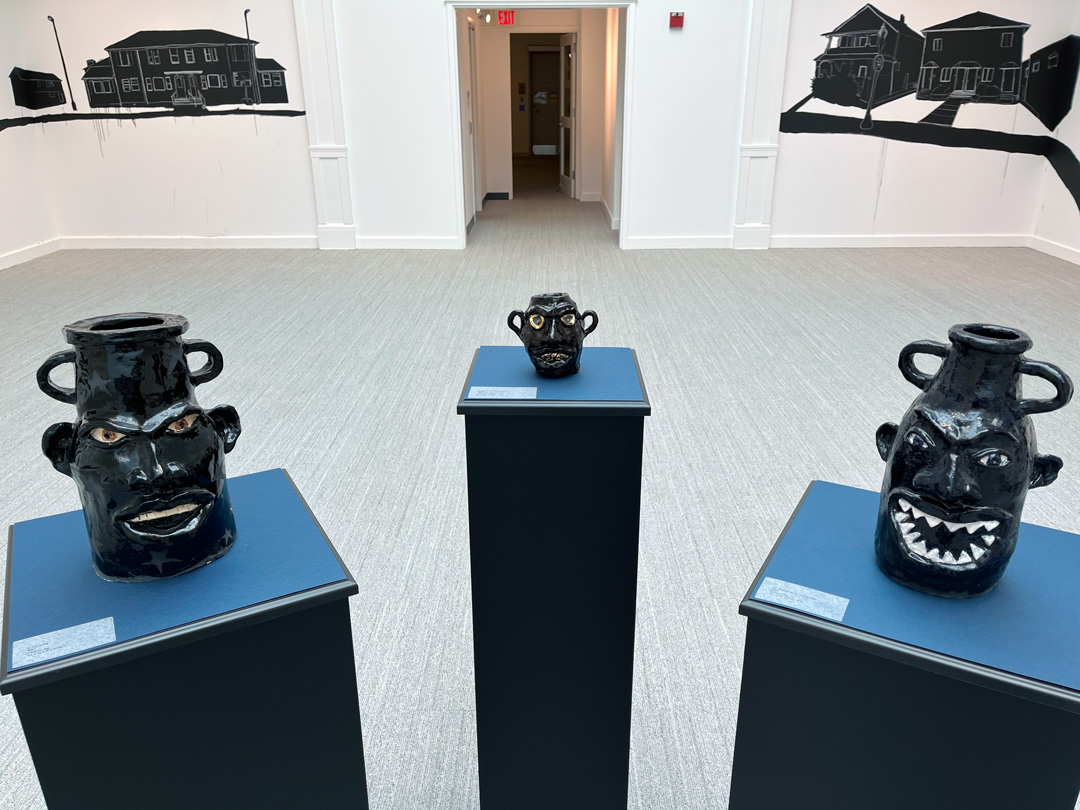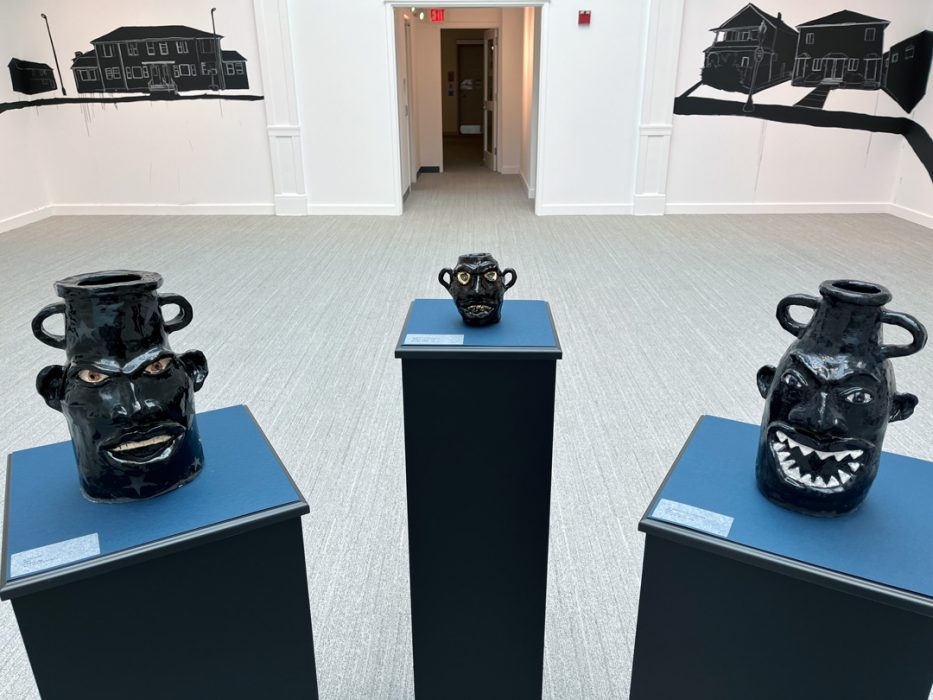April 12, 2023

Transcript by Gallery & Curatorial Fellow Bella Santos

Transcript
As an artist that uses his practice to reflect on social conditions, Anthony Peyton Young believes that no matter one’s experience or age, anyone can connect and relate to art. To Anthony, good art will always find a way to communicate something, even if it’s on a subconscious level. As someone who likes to create with multiple different mediums, Anthony often uses these mediums to communicate different messages and to emphasize certain ideas or identities. In other words, to Anthony, the medium emphasizes the meaning. These three ceramic head jugs titled Shadow of My Former Self, “My Brother, The Tough Guy,” and His Smile, are inspired by a deep, rich tradition and history that Young uses his artistic expertise and personal insights to make connections with.
According to the Smithsonian Center, head jugs such as these “appeared in the American South in the mid-1800s. These types of vessels are attributed to a small number of black slaves working as potters in the Edgefield District of South Carolina. None of these skilled potters have been identified by name.”* These jugs have been speculated to be used as grave marks and self-portraits. However, they were also believed to carry the power to ward off evil spirits that also contain some sort of connection to the afterlife.* The jugs are ultimately the efforts of black slaves in the South trying to maintain and honor their identity in harsh conditions through their artistic skills.
In all three of these works, Young uses different shades of vibrant blues to cover the insides of the jugs. Just as seen in works such as Say His Name: Ramarley Graham 18, Jamee Johnson 22, Ryan Twyman 24, Kajieme Powell 25, Jemel Roberson 26, Tamon Robinson 27, Brendon Glenn 29, Young uses the color blue as a visual motif that represents Blackness. As these jugs also represent a connection to spiritual protection and the afterlife, haint blue is a color traditionally painted on front porches of homes in the deep south. People believed that this color also had an intrinsic ability to fend off evil spirits.
Stars are another common element of Anthony Peyton Young’s artistic visual language. For example, you can find a gold star on the back of “My Brother, The Tough Guy” and numerous gray stars all over Shadow of My Former Self. A Black spiritual song called “My Lord, What A Morning” contains a lyric that inspired the use of this visual motif: “When the stars begin to fall.” Anthony views this movement of the stars to represent the idea of a person “passing over.” In these ceramics, stars become a visual motif that represents the idea of remembrance, which is a theme shared by all of the other works in this exhibition. Young uses these ceramics as an ode of remembrance to the expertise of the black artists in South Carolina whose names are not known.
Young does not ascribe to a certain religion. However, he uses his connection to spirituality through his family’s background with Christianity and spiritual relationships with his ancestors to relate to the rich history and meanings of the head jugs. As these jugs represent spiritual protectors with cosmic power, they also represent Young’s close friends and family members. Young says that to him, these jugs are meant to be vessels of healing in this space where he brings luminosity to his own creative and personal journey as well as the histories and traditions that have impacted him. How do you commemorate the histories of people that you have loved or have impacted you? Are there certain objects that you keep that remind you of them or that you honor them with?
* “American Face Vessels.” The Smithsonian. https://doi.org/https://www.si.edu/spotlight/american-face-vessels.
* “A History of American Face Jugs.” Chattanooga State. https://doi.org/http://river.chattanoogastate.edu/orientations/ex-learn-obj/Face_Jugs/Face_Jugs_print.html.